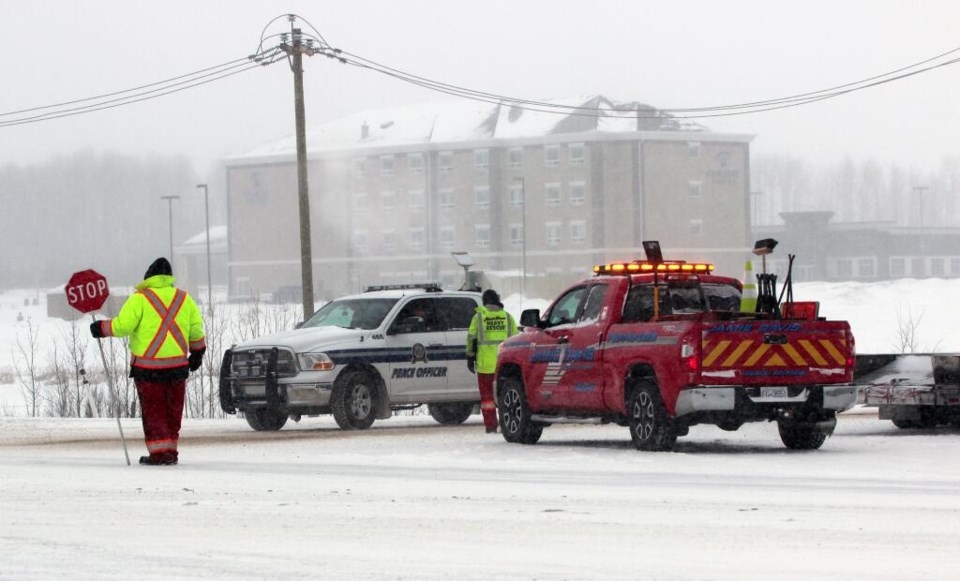If “Highway Thru Hell” producer Mark Miller and his crew learned one thing last winter, it’ s that northern Alberta’ s highways, troublesome as they can be, are not truly hellish in and of themselves.
If “Highway Thru Hell” producer Mark Miller and his crew learned one thing last winter, it’ s that northern Alberta’ s highways, troublesome as they can be, are not truly hellish in and of themselves.
The mentality shared by many of the drivers, however, can make them their own worst enemies.
“The roads actually aren’ t that bad,” Miller said. “They’ re not horrible roads. Just modify your driving habits a little bit.”
Miller is the host and producer of the television documentary program that chronicles the exploits of heavy-rescue service operator Jamie Davis and his crew. The first two seasons of the program were filmed in British Columbia, primarily on the notorious Coquihalla Highway, but a part of the third season was filmed in Lac La Biche County and the surrounding region last winter.
The first episode of that season aired last Tuesday night, giving viewers a glimpse of northern Alberta’ s treacherous roadways. Miller says that, as the season progresses, viewers will gain a deeper understanding of what Albertans drive on-and cope with-during the long, cold winters.
The cold temperatures were especially problematic, for both the tow-truck operators and the people filming them, Miller told the POST. The remoteness of some shooting locations also weighed heavily on both groups.
“The snow’ s a lot lighter (than in B.C.) but it’ s just so cold,” he said. “And it’ s not like B.C. where there’ s a gas station every 85 kilometres.”
As bad as the weather was, the drivers were sometimes worse, and unsafe driving was a recurring problem.
“We’ ve seen people passing in whiteout conditions,” Miller said. At times, he added, crews sought shelter in Conklin when the weather turned foul, but other drivers continued on without even slowing down.
There were occasions on Highways 63 and 881 when the tow-truck operators and cameramen were at the mercy of passing motorists.
“There’ s very little shoulder up there, and some people drive really, really fast,” Miller said. “We know that the job is dangerous but it doesn’ t have to be if people slow down.”
In the first season of “Highway Thru Hell,” a friend of B.C. crewmember Ken Monkhouse lost a leg in a towing accident.
Miller says that people’ s perceptions of the towing business have been changing over the course of the program’ s seasons. In many cases, tow-truck operators are seen now as helpers and facilitators-a far cry from earlier days when the general public’ s views of tow-truck operators “weren’ t super-positive,” he said
And neither the heavy-rescue workers nor the television crews regret establishing a second base of operations in northern Alberta.
The POST asked Miller what his favourite memory of filming “Highway Thru Hell” in Lac La Biche is. He says that the Winter Festival of Speed in March is a definite highlight of the season-and it, and other episodes in the season, will likely put this community on the map.
“It’ s an opportunity to show some of the good things in northern Alberta,” he said. “I don’ t think a lot of Canadians even knew where Lac La Biche was.”
During the Winter Festival of Speed’ s charity race, this reporter collided with Jamie Davis’ stepson Brandon Kodallas. Whether or not that incident has been incorporated into an episode of the program remains to be seen.
New episodes of “Highway Thru Hell” air on Tuesday nights on Discovery Channel.
